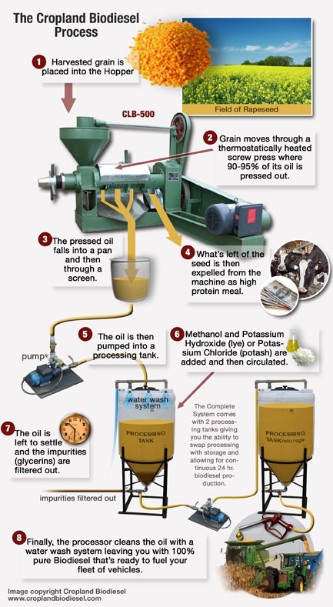BiodieselBiodiesel refers to vegetable oil or animal fat based diesel fuel. Biodiesel burns clean and it is renewable and non-toxic. It can be used in any standard diesel engine. Although biodiesel can be used by itself, it is usually blended into a standard diesel mixture. Biodiesel mixtures can be identified as Bxx, with xx referring to the percentage of diesel mixed in. For example, B20 would be a 20 percent biodiesel 80 percent standard diesel mixture. [4.8] According to the National Biodiesel Board (NBB), the technical definition of biodiesel is as follows: "Biodiesel is defined as mono-alkyl esters of long chain fatty acids derived from vegetable oils or animal fats which conform to ASTM D6751 specifications for use in diesel engines." [4.8] Production ProcessClick image for a larger view. [4.9] There are several different ways to make biodiesel, but most companies that mass produce biodiesel use a process called transesterification.
For more in-depth information about biodiesel, please visit here. Home | Biofuels and Bioenergy | Innovators | Issues | Impacts | About Us | Citations |


